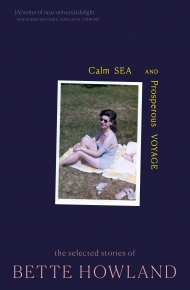Reading Jesmyn Ward’s Salvage the Bones
• October 1, 2013
A recent review of Salvage the Bones considers the novel in the context of a Salon essay about Modern Steinbecks. These novels, the reviewer suggests, “play into the exoticization of lives unlike those of readers who are inclined to pick up literary fiction.”
Salvage the Bones, like her stories “Cattle Haul” (APS 5) and “Barefoot” (APS 14), is set in rural Mississippi (the state with the greatest percentage of poor people in the nation, and one of the top ten in terms of income inequality). It takes place in the days before Hurricane Katrina. The narrator, Esch, fifteen and pregnant, lives with her three brothers and father in a clearing in the woods they call the Pit.
The way the reviewer reads the novel reminds me of when one drives through an unfamiliar neighborhood and, catching oneself staring, averts one’s gaze: We shouldn’t look too closely. That wouldn’t be polite. But at the end of the day, isn’t what makes fiction matter the compact a reader makes: to shift from looking at to seeing with.
To see the Pit not as a place of blight, but to see it as Esch sees it—to understand that what matters isn’t its appearance, its surface ugliness, but her fierce attachment to that place, to her family and their history. Beauty is not only in how a place appears to the world; there is also beauty—and joy—in how a life is being lived in that place.
The novel may, as the reviewer sees it, be about “hardscrabble lives,” and this makes comparisons with Steinbeck obvious. But Jesmyn insists on unsettling the predictable, and for Esch, who is reading Edith Hamilton’s Mythology throughout the turmoil of the novel, the comparison that makes sense to her is with Medea:
"It infuriates me that the work of white American writers can be universal and lay claim to classic texts, while black and female authors are ghetto-ized as 'other.' I wanted to align Esch with that classic text, with the universal figure of Medea, the antihero, to claim that tradition as part of my Western literary heritage. The stories I write are particular to my community and my people, which means the details are particular to our circumstances, but the larger story of the survivor, the savage, is essentially a universal, human one."
To see Esch as Medea, or Reese in “Cattle Haul” as Odysseus (“Two lanes on one side and two lanes on the other. Switch lanes and pass. At night, like now, the signs sharp and clear. The trees likes waves at the side of the road, all black and blue, coming in and going back out like a tide”) is to see them as something more than just characters with “hardscrabble lives.” Is to see their lives as something more than trivial—they are beautiful as the Greek gods were beautiful (at least she gave us that, Monet says to Alsace about their mother in "Barefoot"); they are arrogant; they are humane; they are fools; they are flawed. And Salvage the Bones, to my mind, isn’t so much about escape as it is about belonging.
(And a few more comparisons—projects that Salvage the Bones led me back to: Paul Chan and Chris McElroen’s production of Waiting for Godot in New Orleans, James Alan McPherson’s essay collection A Region Not Home: Reflections from Exile, and Anne Carson’s Grief Lessons.)
Back to Top
Categories
Archive
About
A Public Space is an independent, non-profit publisher of the award-winning literary and arts magazine; and A Public Space Books. Since 2006, under the direction of founding editor Brigid Hughes the mission of A Public Space has been to seek out and support overlooked and unclassifiable work.
Featured Title

"A ferocious sense of engagement... and a glowing heart." —Wall Street Journal
Current Issue

Subscribe
A one-year subscription to the magazine includes three print issues of the magazine; access to digital editions and the online archive; and membership in a vibrant community of readers and writers.
Newsletter
Get the latest updates from A Public Space.
